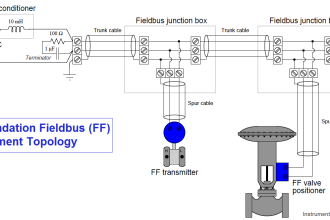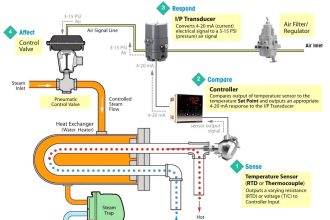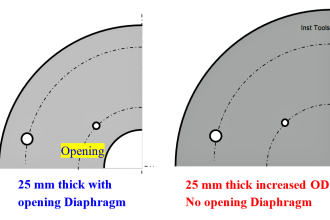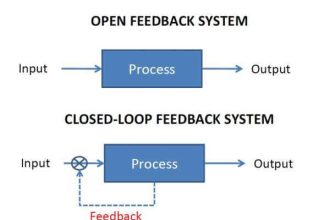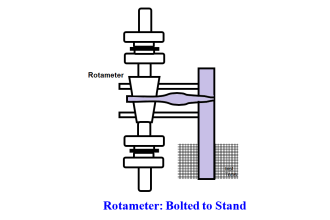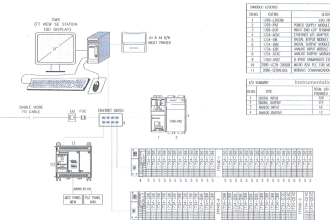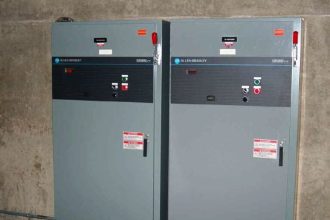In this article, we will learn some general interview questions on wireless networks of industrial automation systems.
Industrial Wireless

A device is having a sim card, fetching data through RS-485 from PLC and sending it to a cloud server. Is it an example of an industrial wireless network?
Yes, it is an example of an industrial wireless network. It requires an active SIM card and a connected Modbus port with the PLC. The device needs coding where the mapping of registers will be done and you need to configure Modbus parameters in it like address, baud rate, parity, stop bit, and data length.
Once communicated, the device will send data received from the PLC and send it through the wireless network to the cloud server. The cloud server can then be accessed by SCADA, MES, ERP, or other higher-level services for managing the data.
Which frequency band is usually used in wireless communication?
In the frequency band, radio and microwave frequencies are used in wireless communication. This is because they have lower frequencies and high wavelengths, allowing them to travel long distances covering Earth.
What is WPA2 and why is it important in industrial wireless networks?
WPA2 stands for wireless protected access 2. WPA2 is a security protocol which encrypts data in a very secure manner and protects it from corruption or hacking. The encryption type used is AES or advanced encryption standard, where the message is split into small blocks of 128 bits (also known as cryptographic keys) and are encrypted as plain text messages which is called ciphertext and cannot be decrypted by unknown users.
To encrypt and decrypt, a common passcode is used by both the parties of sender and receiver, so it is symmetric in nature. Due to such advanced security features, WPA2 is of wide importance in industrial wireless as the plants are critical in nature. WPA2 uses dynamic key encryption, which regularly changes the key and makes it more difficult to crack.
Are the data from PLC’s directly transmitted to the receiver in wireless networks?
No, the data is not transmitted directly. In wireless modes, there are chances of multiple signals clubbing with each other due to wave propagation. So, to properly communicate data, encoding is done in transmitted data, where additional bits are added before and after the actual data.
The data is then modulated in signal waveform and transmitted through the antenna. The receiver decodes the signal at it’s end and understands which is the data that it actually requires.
What are the types of ad-hoc networks?
The various types of ad-hoc networks are –
- mobile ad hoc,
- vehicular ad hoc,
- wireless mesh,
- smart phone ad hoc and
- wireless sensors.
Which specification standard is used in industrial wireless?
The standard used is 802.11. It is specifically designed for wireless LAN and maintained by IEEE (Institute of Electrical and Electronics Engineers). All the devices using wireless in industrial devices must comply with this standard before it is released in the market for use. The most recent one is 802.11 be / WiFi 7, which can achieve speeds of up to 40000 Mbps theoretically.
Is Bluetooth a part of industrial wireless?
Yes, Bluetooth is a part of industrial wireless networks. It is preferred for shorter distances and is way cheaper than a WiFi network, as there is no requirement for routers and other cables afterward.
What are the main factors affecting wireless communication?
The main factors affecting wireless communication are
- interference,
- bandwidth,
- number of channels,
- data rates,
- distance from the access points,
- physical obstructions,
- signal frequencies,
- poorly commissioned antennas,
- signal reflection, and
- polarization of signals.
What is a wireless network analyzer?
It is a tool for analyzing network performance. It shows all the aspects of the network and helps the engineers to troubleshoot the system, like signal monitoring, network monitoring, and utilization monitoring. This ensures that your industrial devices are constantly communicated with the nearby access points.
What are some threats to wireless networks?
The various types of threats encountered in a wireless system are –
- eavesdropping,
- password cracking,
- denial of service attack,
- man in the middle attack,
- rogue access points,
- piggybacking,
- IP spoofing,
- passive capturing and
- wireless sniffing.
What is a wireless network profile?
Just like user profiles, wireless profiles are a group of settings which has SSID, passwords, network addresses, and security types and can be moved from one device to another easily in case of a change. Due to this, your time is saved and devices connect to each other instantly.
Read Next:
- Difference Between TCP and UDP
- What is Rapid Spanning Tree Protocol?
- Facts About RS485 Industrial Network
- Cable Lengths in Ethernet Network
- What is Auto-negotiation in a Network?








